What type of content do you primarily create?




You’ve got a company social media account, a website, and maybe an email list to communicate with potential customers. But those content marketing channels all have one thing in common: they’re predominantly text-based.
Audio content like branded podcasts gives you a chance to cater to a target audience that prefers to listen to their content. The problem is: with so many podcasts out there, how can you create a company podcast that stands out, builds brand awareness, and maybe geven makes money? This guide shares the answer, complete with nine examples of actually good branded podcasts to draw inspiration from.
What is a branded podcast?
A branded podcast is a type of audio content that businesses use to establish thought leadership, build brand awareness, and promote their products and services. People can tune into the podcast using a podcast app like Apple Podcasts or Spotify, then click the link in the podcast show notes to visit the company’s website and buy its products or services.
4 benefits of branded podcasts
Engage and grow your audience
A branded podcast is a superb channel to increase brand awareness. Unlike text-based content like blog posts or video-based content on YouTube—both of which require undivided attention—podcasts fit seamlessly into peoples’ daily routines. Many listen while driving, exercising, or doing housework.
A BBC study found that this kind of active listening boosts engagement with and memory for the brands mentioned in a podcast.
That’s not to mention the size of the audience: with a branded podcast, you have the potential to reach 464 million podcast listeners who tune into their favorite show on a podcast player. You’re instantly primed to reach people across Apple Podcasts and Spotify with a company podcast.
Show authority and social proof
It’s one thing to sell a product or service; it’s another to become a voice of authority in the global conversation about the industry. Aligning your brand with valuable ideas—and spotlighting experts through interviews—builds trust and recognition among your listeners.
Build strong customer relationships
A successful branded podcast isn’t just a way to drive sales from new customers. Treat your own podcast as a way to build stronger relationships with customers you already have. You could invite them to host the podcast with you, talk to their favorite influencers, or ask them to submit questions that you’ll answer on the show.
A regular podcast gives people a reason to stay connected to your business. If they know to come back once a week and be entertained or educated, you can reduce your reliance on other marketing channels designed to drive existing customers back to your website to make another purchase.
Generate leads and revenue
Branded podcasts are a great way to drive website visits. Treat your show as the top of the marketing funnel, then use tactics to get people on your website buying products. That might mean including links to your site in the podcast show notes, giving your podcast listenership an exclusive discount code (such as “PODCAST”), or promoting lead magnets to grow your email list.
Top 9 branded podcasts to start your own
Before we jump into the step-by-step process of hosting your own company podcast, let’s look at nine brands who’ve started their own show. As one expert source puts it, ‘The best branded podcasts captivate audiences, build brand identity, & boost conversions.’ Here’s how nine real shows do exactly that.
1. a16z
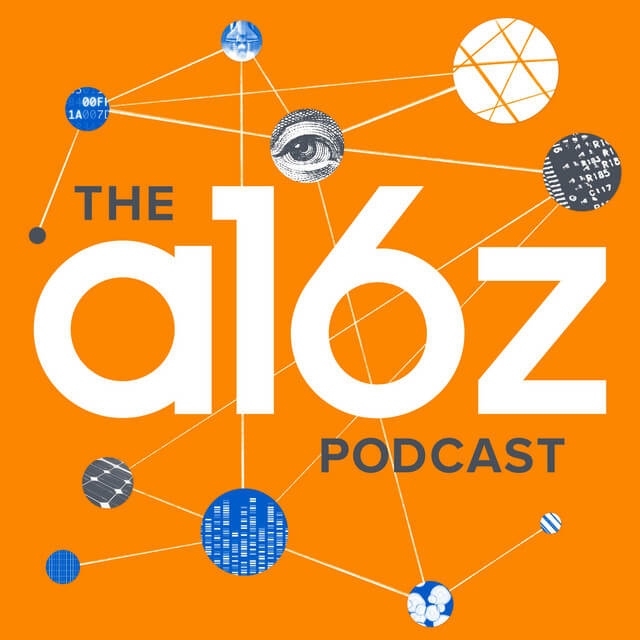 |
a16z is a venture capital firm that invests in companies across the AI, healthcare, fintech, and gaming industries. The company has created a branded podcast that covers topics in these industries, oftentimes interviewing experts in the industry.
What’s interesting about this company podcast is that the guests are genuine, credible thought leaders. Whether it’s a Stanford University professor or the CEOs of multi-million dollar companies, it proves that a16z knows its target audience. Business people interested in venture capital need more than light-hearted conversations with social media influencers.
2. BombBomb
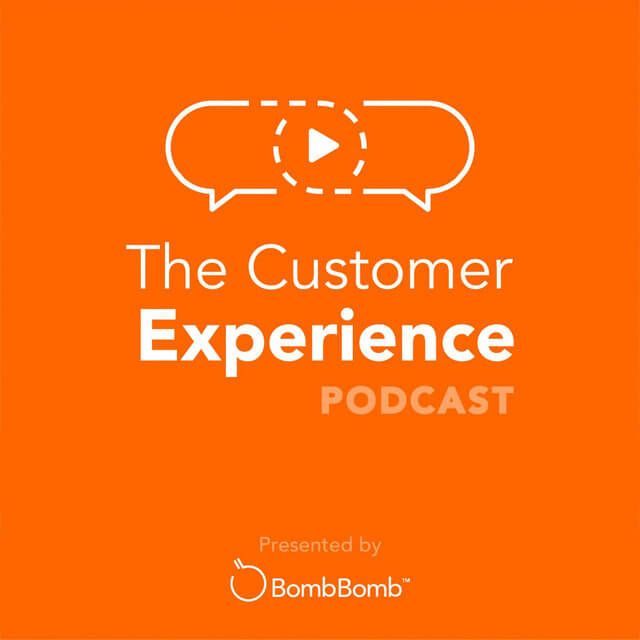 |
BombBomb is a software company that sells communication tools to help businesses communicate virtually. It uses the interview format to talk about topics in the customer experience space—things its target audience would want to listen to.
Pay close attention to BombBomb’s podcast episode titles. Each episode features a guest, but rather than using the guest’s name as the episode title—which could be great for listeners who know and like the guest, but alienating for people who haven’t heard of them—the episode titles begin with the theme and lessons contained in the interview. That way, listeners know what they’re getting before they press play.
3. WHOOP
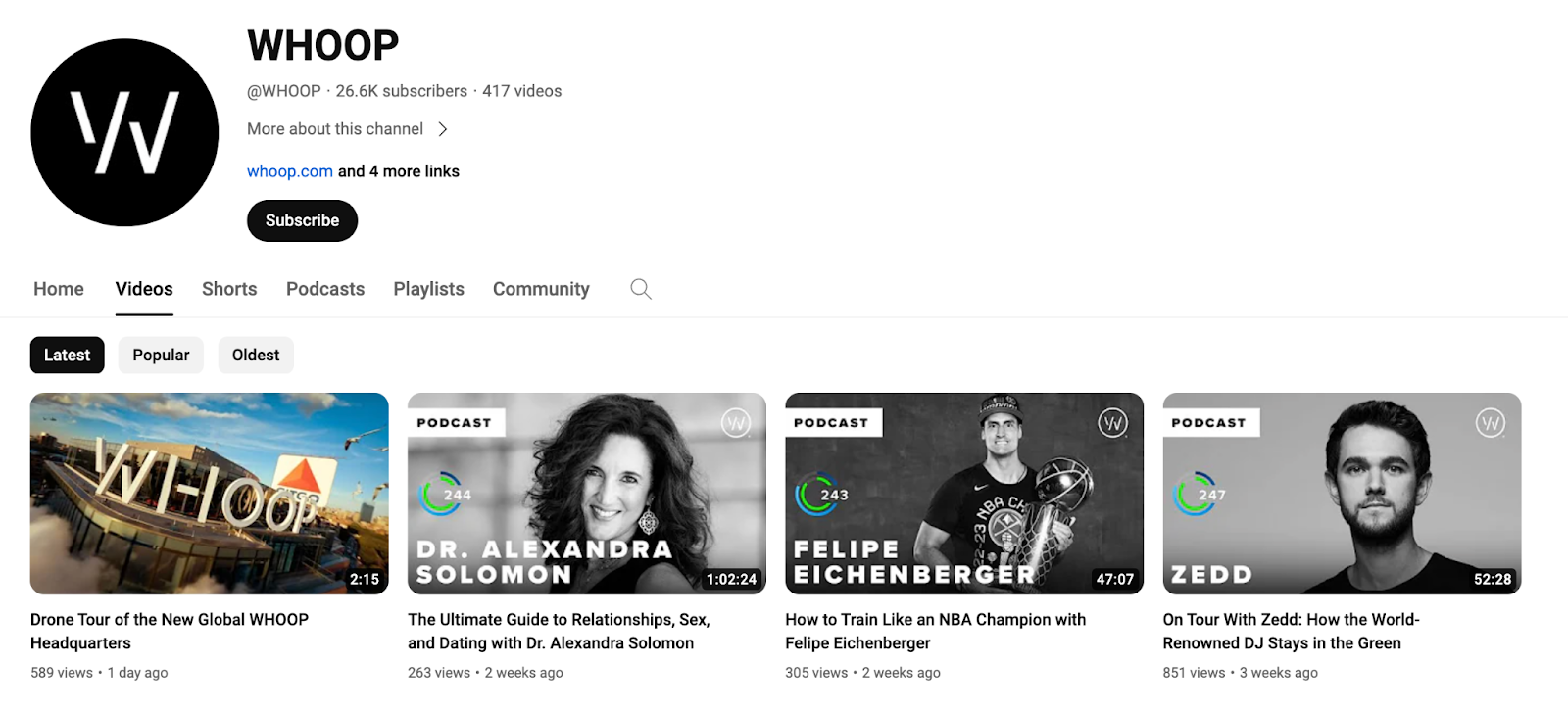 |
Your branded podcast doesn’t have to limit itself to audio-based platforms like Spotify or Apple Podcasts. Take WHOOP, for example—an ecommerce brand that sells fitness trackers. It creates video versions of its podcast and uploads them to YouTube. This helps the brand capture the majority of people who tune into their favorite podcasts on YouTube.
This strategy has helped WHOOP climb to over 26K YouTube subscribers. That’s a huge competitive advantage and a captive audience to build brand awareness on YouTube.
📹 Start learning: How to start a video podcast
4. 37signals
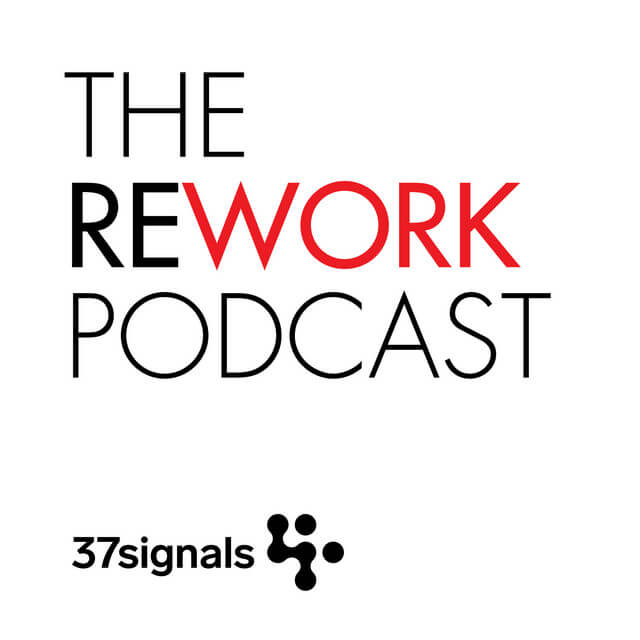 |
37signals is a software company with a branded podcast that touches on remote work and entrepreneurial topics. But instead of inviting guests on the show, a dedicated podcast host runs the episodes solo to build a stronger connection with listeners. This is supplemented with the occasional input from the company’s co-founders (who also run Basecamp).
To replicate this strategy you’ll need an engaging host—one that’s entertaining enough to take center stage.
5. Duolingo
 |
If you’re searching for an example of a branded podcast that exists to educate potential customers, look no further than Duolingo. The language learning app doesn’t limit its education to paying subscribers. Anyone can tune into its Spanish podcast series to listen to real-life stories in a language they’re not yet fluent in.
Some companies avoid the free podcast route because, well, customers should pay for your services, right? But a podcast can help people see the value you provide before they subscribe. It’s like free content that acts as a teaser before people get the real thing: your product.
6. Shopify
 |
Shopify is an ecommerce brand with millions of customers. It uses that to its advantage with Shopify Masters—a branded podcast designed to tell in-depth success stories of entrepreneurs using Shopify’s products.
Don’t rule out this strategy if you’re a startup or small business. Although Shopify publishes new podcast episodes weekly, you don’t necessarily need to follow that strategy to the letter. You can still find a wealth of inspiring stories by interviewing people who’ve seen success with your product or services. For example, if you staggered new interviews with other podcast formats (like a deep dive or solo show) every two weeks, you’d only need 26 customers to fill up your content calendar for the entire year.
7. National Geographic
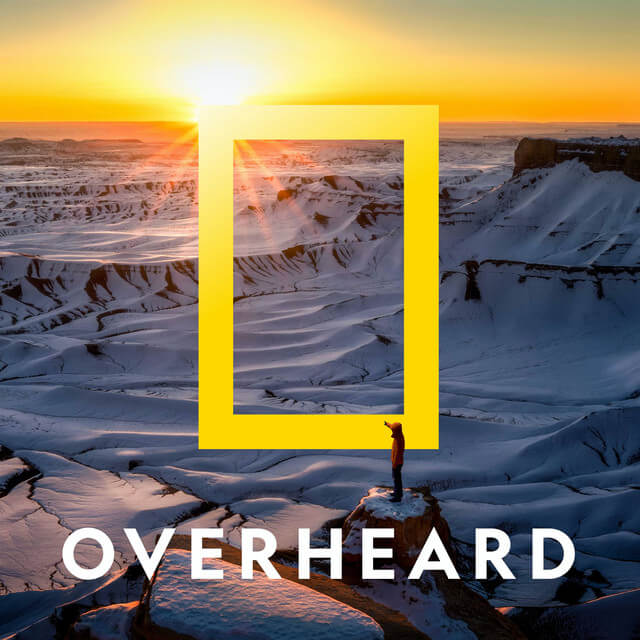 |
If there’s one thing that National Geographic excels at, it’s creating high-quality content. This branded podcast is no different.
National Geographic’s podcast doesn’t just talk about the content it sells. Instead it takes people behind the scenes of the organization. “Overheard at National Geographic” retells stories told by team members who—because they work at National Geographic—have stories to tell from all corners of the world.
8. Trader Joe’s
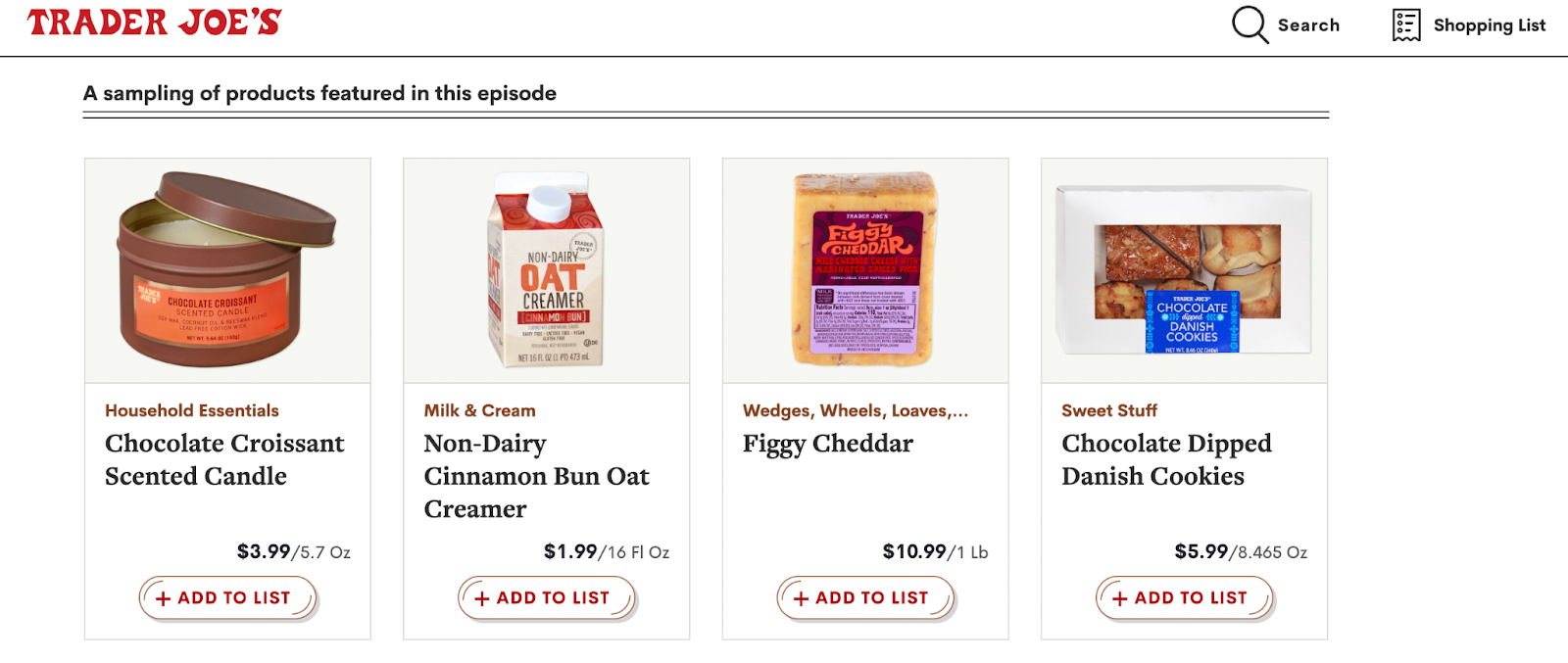 |
Convenience store Trader Joe’s might not sound like a suitable candidate for a branded podcast, but it proves you can launch a show without having an obviously interesting niche. From holiday lists to loyalty clubs, the brand’s podcast ties trending topics into facts about the organization.
It’s an especially great example to look into if you’re selling online products. Trader Joe’s publishes the transcript of its podcast on its website. Viewers can see the products mentioned in each episode, their price, and add them to their online shopping cart—an omnichannel customer experience that turns your company podcast into a sales machine.
9. Microsoft
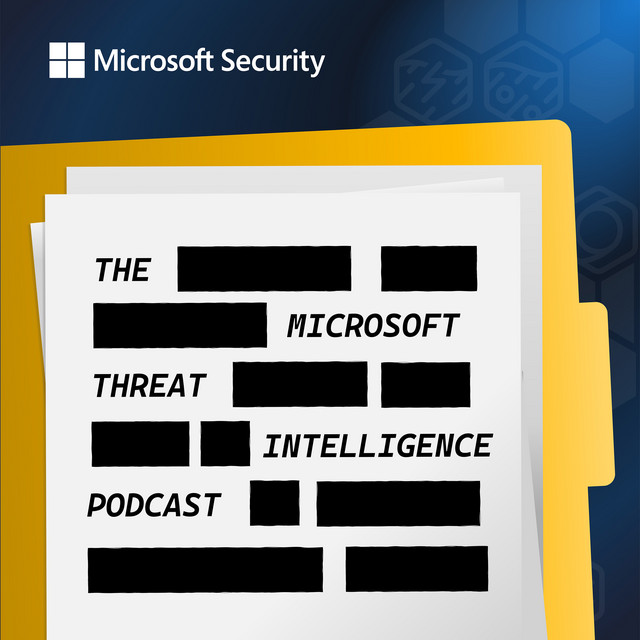 |
Do you work for a large organization or sell multiple products? Your branded podcast doesn’t have to cover every topic. Instead, take a leaf from Microsoft’s book and go niche—like this podcast hosted by its Threat Intelligence team.
Not only is this a great way to claim market share for a niche product, but it’s a type of thought leadership that can stand out. In this case, the cybersecurity industry is overrun with so-called experts. When you attach Microsoft’s brand identity to this show and hear from the team who work for such a prestigious company, you instantly know this one is credible.
How to start a branded podcast
Feeling inspired to start your own branded podcast? Let’s walk through the process of creating a podcast on behalf of a business.
Step 1. Define your target audience
Much like any other marketing strategy, the first step in creating a branded podcast is to define your audience. Who will you be talking to when recording new episodes? Detail demographic and behavioral data like:
- Age
- Location
- Hobbies and interests
- Goals
- Challenges
Pull information from your brand messaging documents and sales platform for help here. Data from your online store might show that most customers are women, or that people aged over 50 have a higher conversion rate than younger demographics. Either way, this data can help you fine-tune your target audience.
💰 Monetize your show: The podcast advertising rates guide
Step 2. Prepare your podcast topics
Next, choose what you want to talk about in your show. Don’t fall into the trap of choosing a popular podcast niche—such as true crime—and creating a company podcast around that if it has minimal relation to your products or services. The greater the overlap between what you sell and what you podcast about, the more chance you have at monetizing your show.
And remember: you don’t have to be super specific about nailing down a single niche. Many brands use podcast segments to talk about different topics or themes within each episode.
Step 3. Record and edit your show
Choose a topic from your shortlist and start recording your show. You’ll need a podcast production platform to do this. We’re biased, but we recommend Descript. It has everything you need to record and edit your show, including features like:
- Remote recording—ideal if you’re co-hosting or inviting a guest
- Automated transcription to edit your podcast like you’d edit a Google Doc
- Filler word removal to banish awkward stutters, pauses, and phrases
- AI tools to fix audio mistakes with a clone of your natural voice
- Show notes summarizer that uses AI to write your podcast description
Once you’ve edited your podcast in Descript, you can export it directly to popular hosting platforms like Buzzsprout, Podbean, and Restream. It’s as simple as a few clicks.
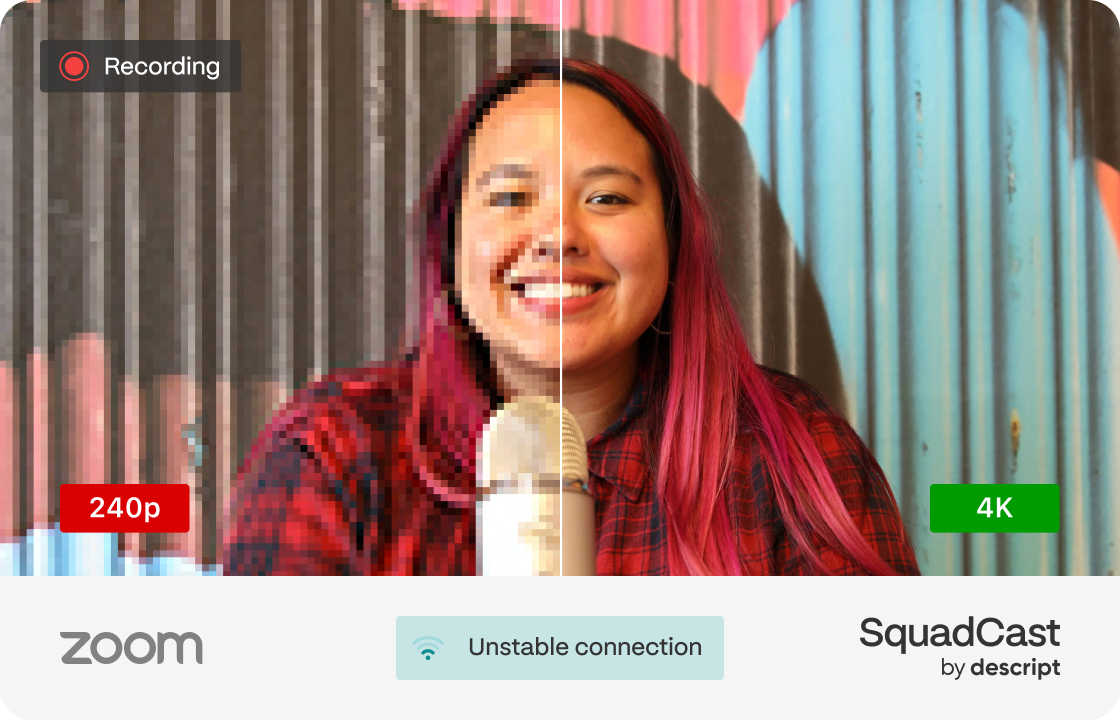 |
Step 4. Promote your branded podcast
To share your new podcast with the world, you’ll need to find a podcast hosting platform. This acts as a home for your podcast. It’s also where you’ll get the RSS feed link to submit your branded podcast to directories like Apple Podcasts and Spotify.
Once your podcast is live in the main directories, get people to tune into your new show by repurposing each episode and turning it into teaser-style audio or video clips.
The Descript feature Find Good Clips does this for you. It’ll use AI to run through your episode and pull out the most entertaining, educational, or useful parts of your episode. Those make for golden nuggets to share on social media.
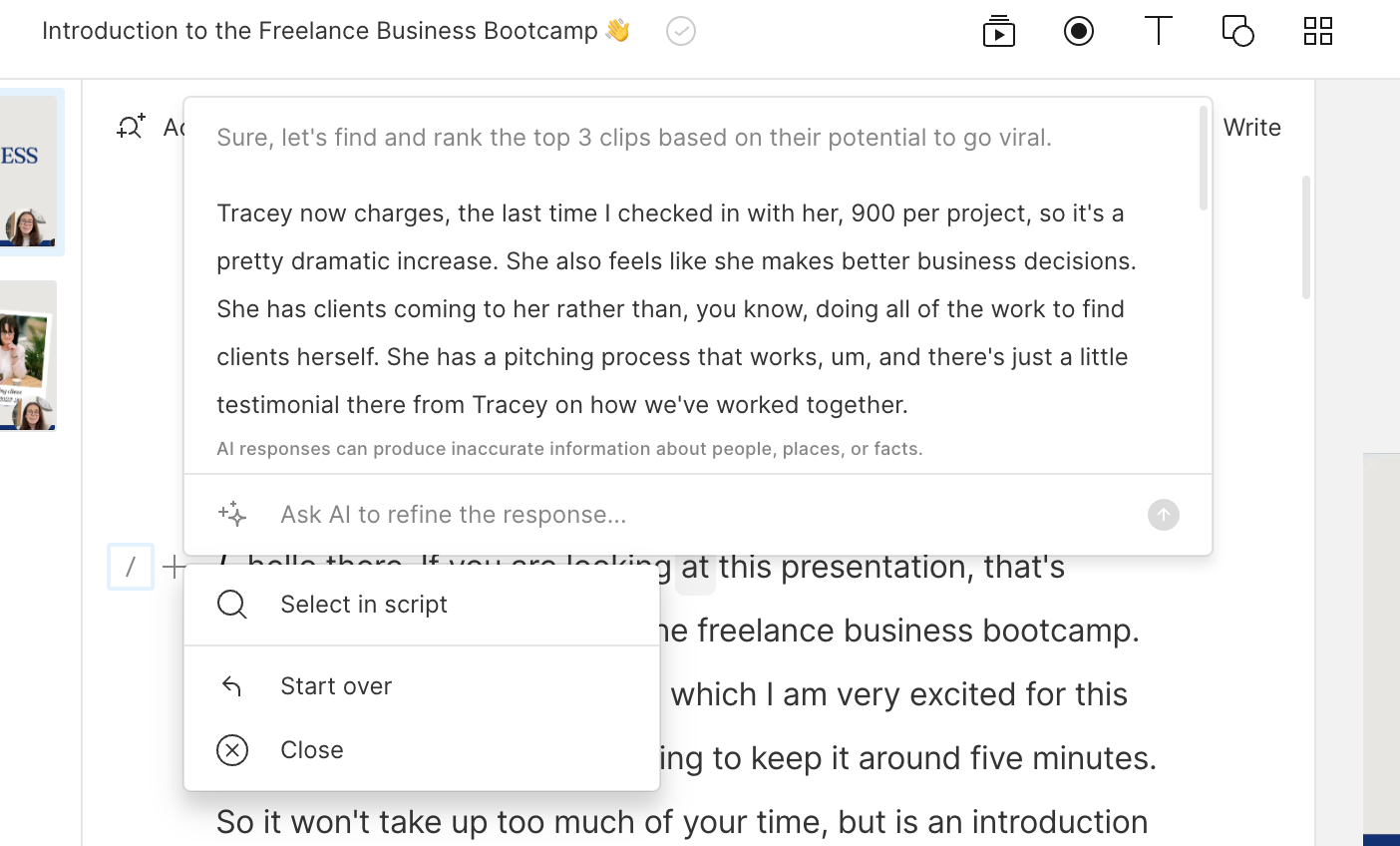 |
The best tool to start and grow a company podcast
A branded podcast is one of the most effective ways to communicate with your audience, especially if you’re on a budget. Descript offers a free trial that comes with premium podcast features as standard:
- Record remote interviews with Squadcast
- Improve audio quality with Studio Sound
- Edit your podcast like you’d edit a Google Doc
- Collaborate with your team through project comments
- Turn your podcast into a video to promote on social media and YouTube
Thousands of the world’s top companies—including NPR and The New York Times—use Descript to record and edit their podcast. Take a free tour today to find out why.
Frequently asked questions
Which brands sponsor podcasts?
Many well-known companies sponsor podcasts, such as BetterHelp, Shopify, and Athletic Greens. Sponsors can range from major household names to smaller niche brands that see value in connecting with podcast listeners. Their primary goal is to reach engaged audiences who trust the podcast’s host and content.
How much do brands pay podcasts?
Sponsorship rates vary widely based on audience size, show popularity, and ad format. Some smaller podcasts might earn $10–$25 per 1,000 downloads, while larger shows or unique sponsorships can command higher fees. Consistent, engaged listenership is often more important to sponsors than large but passive audiences.
How do I measure success for a branded podcast?
Beyond download counts, many businesses use listener engagement, email sign-ups, social shares, or referrals to gauge a podcast’s impact. Feedback from surveys or reviews also shows how well episodes resonate. Combining these metrics can show if the podcast boosts brand awareness or drives real conversions.
How can Descript help me create and publish a branded podcast?
Descript provides tools to record, edit, and transcribe your podcast. You can edit mistakes by cutting words on a text script, remove filler words automatically, and even generate show notes using the built‑in AI. When you’re finished, Descript offers quick publishing options to leading podcast hosts, plus the ability to create shareable clips for promotion.





























%201.svg)



















